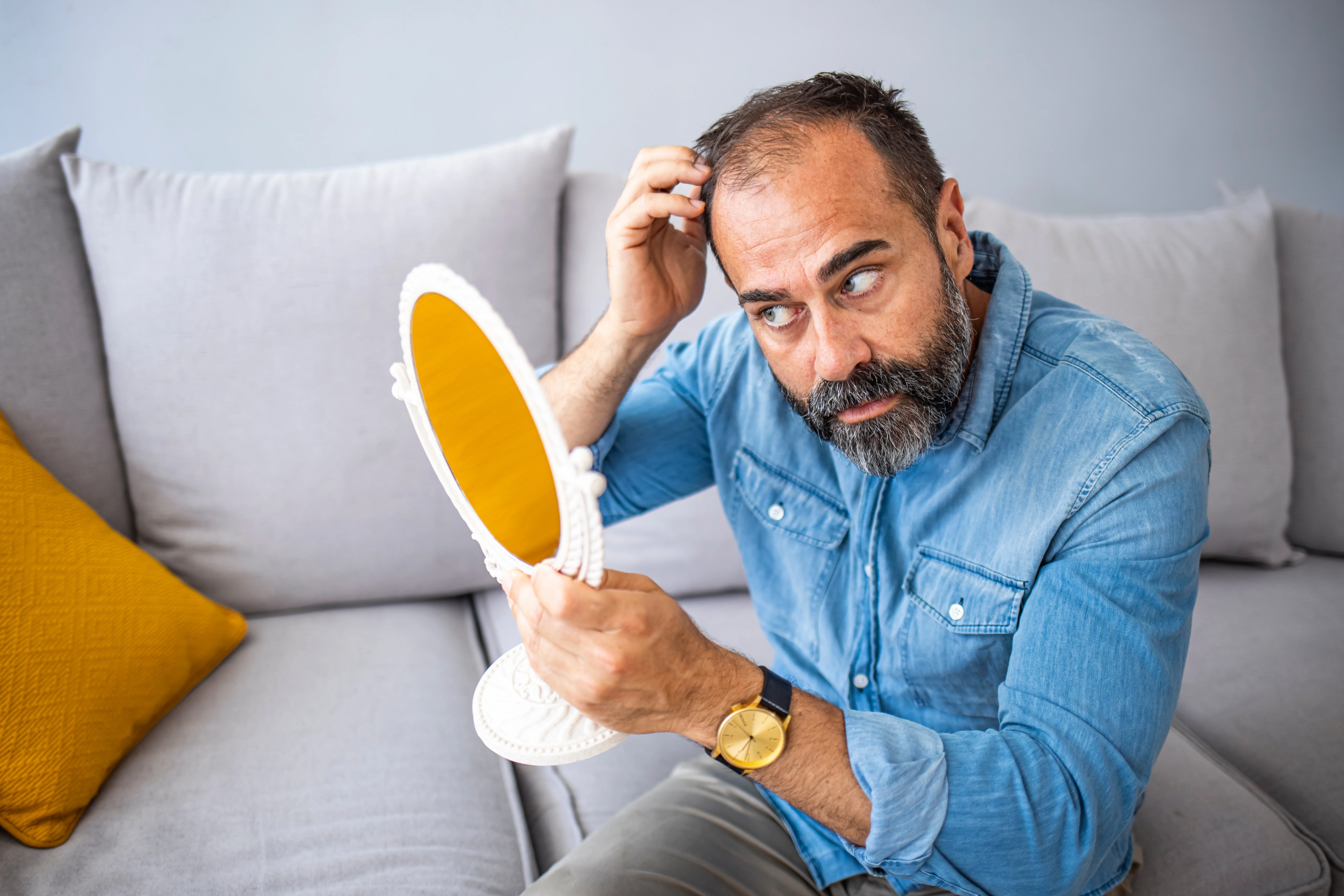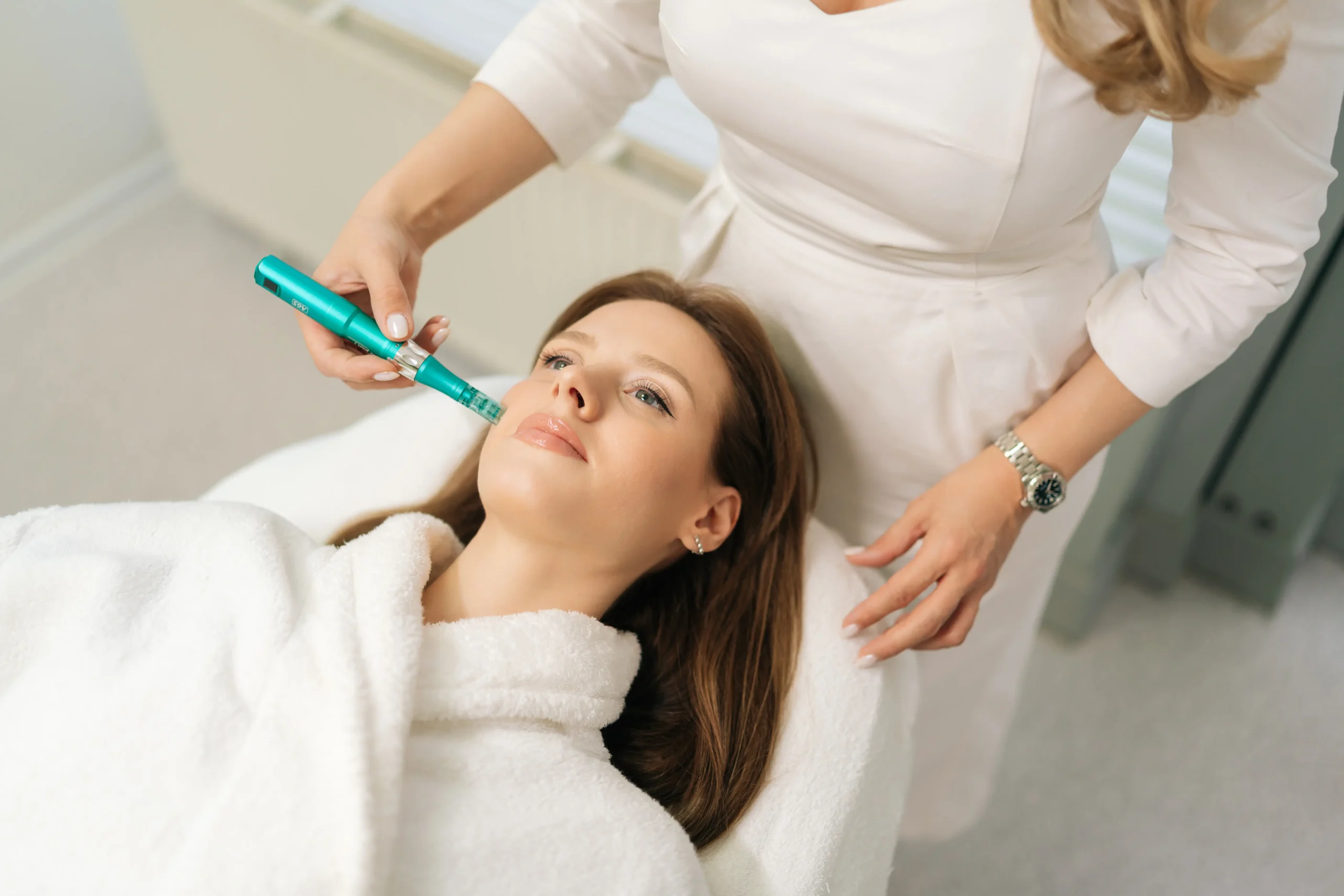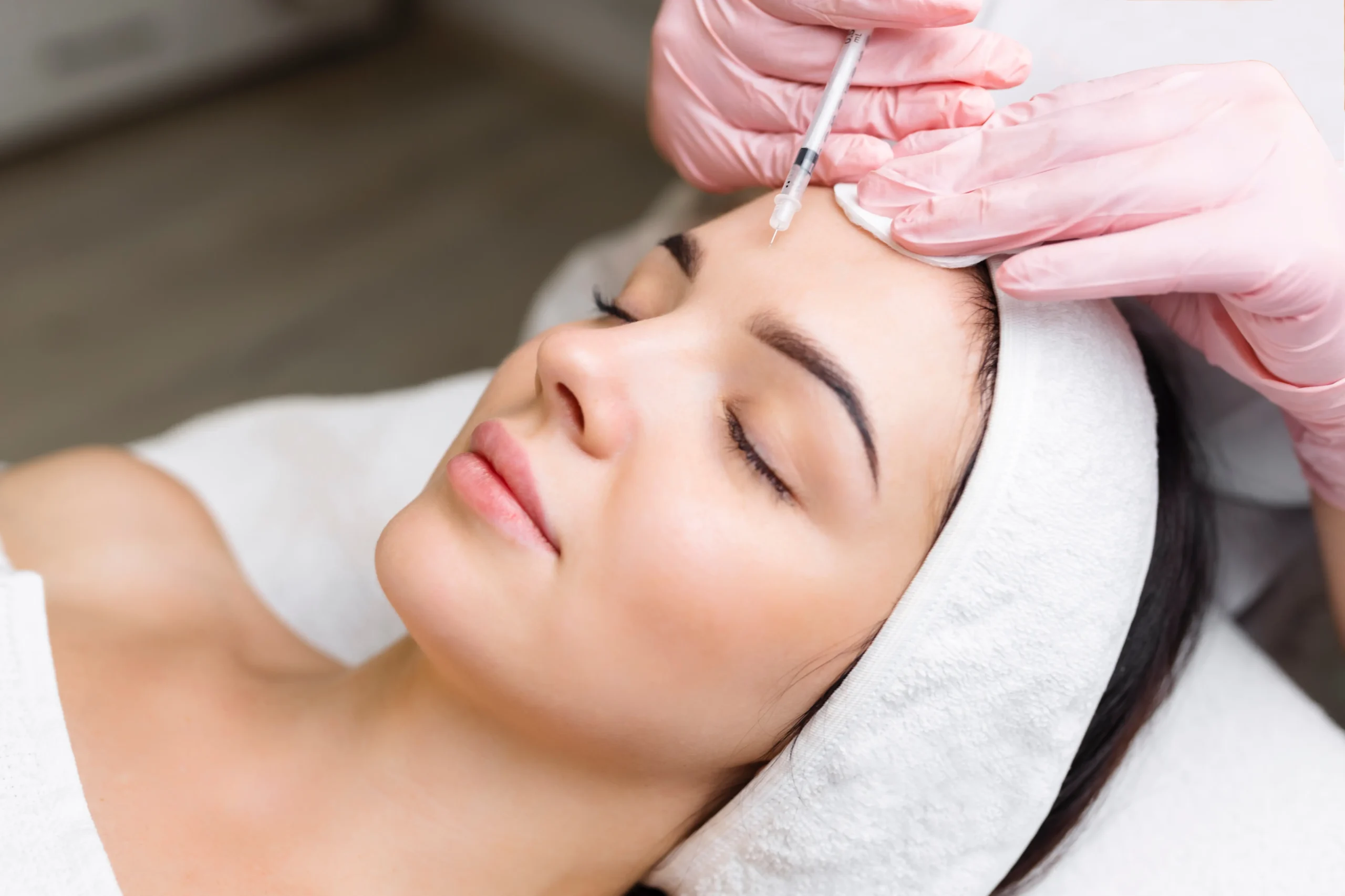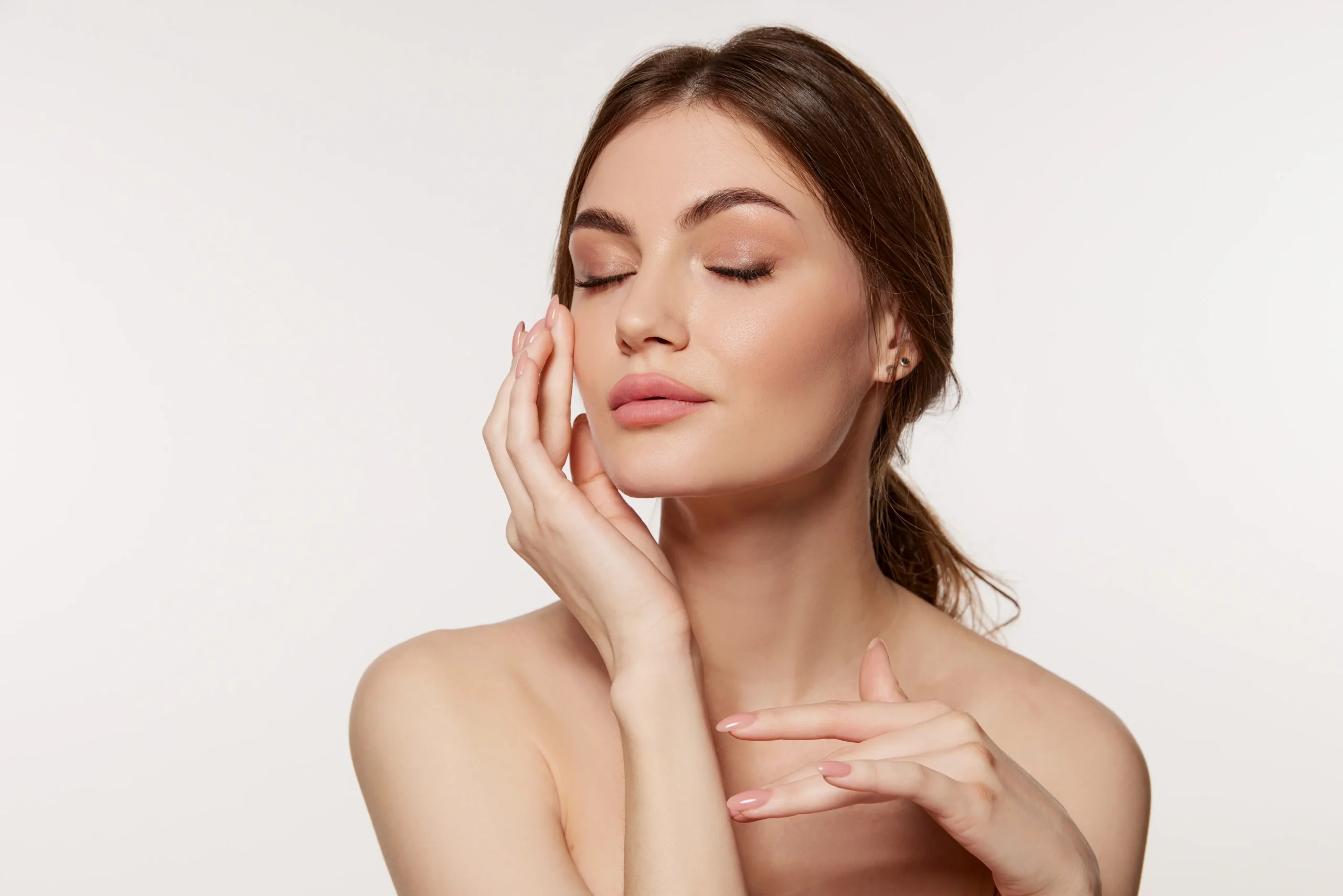Hello, I’m Rosalie Orrostieta, founder of Rose Medical Aesthetics here in Sarasota. If you’re exploring effective solutions for hair loss, you understand how personal and emotional that journey can be. My passion lies in helping people regain their confidence, and one of the most transformative options for hair restoration we offer is PRP hair treatment. This guide is designed for you if you’re wondering whether you are the perfect candidate for this therapy.
I’ll never forget a client who sat in my office, describing how she’d started changing her hairstyle to hide a widening part. She spoke in a quiet voice, but her eyes conveyed a deep sense of frustration and loss of self. It’s a story I’ve heard many times, from both men and women. That feeling of seeing more hair in your brush or on your pillow than you’d like is a universal pang of worry.
For years, the options felt limited and often involved invasive procedures or daily chemical treatments. But medicine is evolving, and one of the most exciting advancements is in the field of regenerative medicine using your body’s own incredible power to heal and restore itself. This is where Platelet-Rich Plasma (PRP) hair treatment comes in, and it has been a game-changer for so many of my clients.
In simple terms, PRP therapy uses a concentrated solution of platelets, derived from a simple draw of your own blood, to awaken dormant hair follicles. Think of it as a high-potency, all-natural fertilizer for your scalp. But is it the right treatment for you? Let’s walk through the five key signs that you might be an ideal candidate for this remarkable therapy.
Sign #1: You’re in the Early to Moderate Stages of Hair Loss
Timing is one of the most crucial factors for success with PRP. I often tell my clients to think of their hair follicles like little lightbulbs. In the early stages of hair loss, many of these bulbs aren’t burnt out; they’ve just gone dim. They’re dormant, inactive, but still connected to a power source. PRP acts like a surge of energy that brightens those bulbs again.
However, if you wait until the follicle has been inactive for a very long time (typically years), it can unfortunately “burn out” completely. At that point, the connection is lost, and no amount of stimulation can bring it back. This is why PRP is a treatment for hair thinning and miniaturization, not for areas that have been completely bald for a long time.
Who this is for: Individuals who have been noticing progressive thinning over the last one to five years.
What to look for:
- Your part is gradually becoming wider.
- You can see your scalp more easily under bright lights.
- Your ponytail feels less full than it used to.
- For men, you’re noticing a receding hairline or thinning at the crown (the classic early signs of male pattern baldness).
| Stage of Hair Loss | PRP Suitability & Rationale |
| Early Stage | Excellent Candidate. At this stage, follicles are mostly dormant or miniaturizing, not gone. PRP is highly effective at reactivating these follicles to produce thicker, healthier hair shafts. |
| Moderate Stage | Good Candidate. Many follicles are still viable and can be stimulated by PRP to improve density and thickness. Combining PRP with other therapies may also be recommended for the best outcome. |
| Advanced Stage | Not a Suitable Candidate. At this point, the hair follicles have likely become scarred over and are no longer viable. PRP cannot revive a follicle that is gone, so other restoration options should be considered. |
A client, a gentleman in his late 30s, came to see me at my Sarasota practice recently. He’d just started noticing significant thinning at his crown and felt a sense of panic. Because he acted quickly, we were able to start PRP treatments while his follicles were still very much viable. His results were fantastic precisely because he sought help at the perfect time. If you’re just beginning to notice these changes, you’re in the sweet spot.
Sign #2: Your Hair Loss is Caused by Androgenetic Alopecia
While PRP can help with various types of hair loss, the condition it has been most extensively studied for and shown to be most effective against is androgenetic alopecia.
That’s the clinical term for what most of us know as male or female pattern baldness. Despite the intimidating name, it’s incredibly common and is driven by a combination of genetics and hormones. It’s the reason why hair loss often runs in families. In this condition, a hormone called Dihydrotestosterone (DHT) causes hair follicles to shrink, or “miniaturize,” producing finer, shorter hairs until they eventually stop producing hair at all.
PRP works directly against this process. The growth factors released by the platelets are powerful signals that essentially tell the follicles to wake up, resist the shrinking effects of DHT, and get back to the business of growing thick, healthy hair.
For me, as a practitioner, the data is exciting, but the real reward is seeing it translate into real-world confidence. I see it in men who can finally stop worrying about that spot on their crown and in women who can part their hair wherever they please without a second thought.
Sign #3: You Are in Good Overall Health
This might sound obvious, but it’s a point I always stress during my consultations. PRP therapy is an autologous treatment, which means the “product” we are using is created from your own body. The secret ingredient is you. Therefore, the healthier you are, the richer and more potent your plasma will be.
Your platelets are your body’s first responders. When you get a cut, they rush to the scene to stop the bleeding and release growth factors to start the healing process. We are harnessing that exact same biological function for your scalp. If your body’s systems are running smoothly, your platelets will be packed with the high-quality growth factors needed to stimulate your hair follicles effectively.
Conversely, certain health conditions can interfere with the treatment’s safety or efficacy.
Who Might NOT Be a Good Candidate?
As a nurse practitioner, your safety is my absolute priority. During our consultation, we’ll go over your full medical history. PRP is generally not recommended for individuals with:
- Active Infections: Any infection on the scalp must be resolved first.
- Blood Disorders: Conditions like clotting disorders or thrombocytopenia (low platelet count) can make the procedure unsafe.
- Certain Autoimmune Diseases: Especially those that attack the scalp.
- Active Cancer or Undergoing Chemotherapy: This requires clearance from your oncologist.
- Use of Blood Thinners: This can increase the risk of bleeding and bruising.
Being honest about your health history is the first step to a safe and successful outcome.
Sign #4: You Have Realistic Expectations and Understand the Timeline
In our world of instant gratification, it’s natural to want immediate results. However, PRP is a biological process, not a cosmetic cover-up. It works in harmony with your body’s natural hair growth cycle, and this requires a little patience.
I always compare it to planting a garden. You can’t put a seed in the ground in the morning and expect a flower by the afternoon. You have to prepare the soil (our initial PRP sessions), plant the seed, and then give it the time and nourishment it needs to sprout, grow, and finally blossom.
Here is the typical timeline I share with my clients at Rose Medical Aesthetics:
- Initial Phase: We begin with a series of 3 to 4 treatments, spaced about 4 to 6 weeks apart. This is the “loading phase” where we are saturating the scalp with growth factors.
- First Signs of Results (2-3 Months): The very first thing most people notice is a significant reduction in hair shedding. This is a wonderful sign that the follicles are stabilizing.
- Visible New Growth & Thickness (4-6 Months): This is when the magic starts to become visible. You’ll begin to see new, fine hairs sprouting and notice that your existing hair feels thicker and stronger.
- Full Effect (Up to 12 Months): The results will continue to improve for up to a year as those new hairs mature and grow longer.
Understanding this journey from the start is key to being happy with the outcome. The result is not a sudden, dramatic change, but a gradual, natural-looking restoration of your own hair.
Sign #5: You Are Committed to the Full Treatment Protocol & Maintenance
The final sign you’re a great candidate is that you view PRP as an ongoing part of your hair health journey. The initial series of treatments produces fantastic results, but the factors that caused the hair loss in the first place (genetics and hormones) are still present.
Because of this, maintenance is essential to protect your investment and keep your hair looking great. Think of it like a fitness routine. You can’t go to the gym for three months, get in the best shape of your life, and then stop completely, expecting the results to last forever. You have to keep going to maintain your strength and health.
The same is true for your hair.
Typical Maintenance Schedule: After your initial series, I typically recommend a single maintenance session every 6 to 12 months. These sessions are quick, easy, and crucial for sustaining the follicle stimulation and keeping your hair density gains for the long term.
I have clients who have been with me for years. They come into my spa in Sarasota for their maintenance session as a simple, proactive part of their self-care routine. They are the ones who enjoy their beautiful, healthy hair year after year, and it’s a testament to their commitment to the process.
Making Your Informed Decision
So, as you stand in front of the mirror, considering your options, run through this mental checklist:
- Is my hair thinning, but not yet completely gone?
- Does pattern baldness run in my family?
- Am I in good overall health?
- Am I patient and realistic about seeing gradual, natural results?
- Am I ready to commit to maintenance to protect my results?
If you found yourself nodding along to these points, there is a very strong chance that PRP hair restoration could be a life-changing treatment for you. The next step is a professional consultation to confirm your candidacy and create a plan tailored specifically for you.
At Rose Medical Aesthetics, my approach is built on expertise, trust, and a deep, personal understanding of your aesthetic goals. I believe in empowering my clients with knowledge and providing them with safe, effective treatments that deliver real, confidence-boosting results. If you are in the Sarasota area or just beginning your research, I invite you to come in for a conversation. Let’s explore how we can start your hair restoration journey together.




